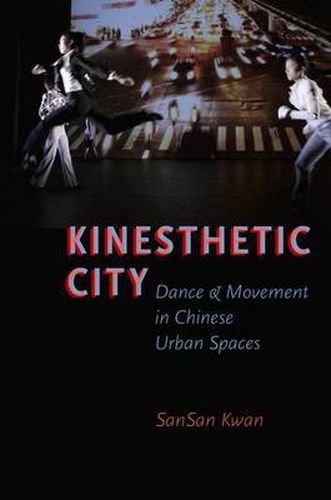Readings Newsletter
Become a Readings Member to make your shopping experience even easier.
Sign in or sign up for free!
You’re not far away from qualifying for FREE standard shipping within Australia
You’ve qualified for FREE standard shipping within Australia
The cart is loading…






In Kinesthetic City, author SanSan Kwan explores the contentious nature of Chineseness in diaspora through the lens of moving bodies as they relate to place, time, and identity. She locates her study in five Chinese urban sites–Shanghai, Taipei, Hong Kong, New York’s Chinatown, and the San Gabriel Valley in Los Angeles–at momentous historical turning points to parse out key similarities and differences in the construction of Chineseness. The moving bodies she considers are not only those in performances by some of the most well-known Chinese dance companies in these cities, but also her own as she navigates urban Chinese spaces. By focusing primarily on kinesthesia–the body’s awareness of motion–to gather information rather than more traditional modes of sight, sound, smell, touch, and taste, she highlights the importance of motion in the determination of space.
In examining in these specific places at these precise historical moments, Kwan illuminates how moving bodies contribute to the production of those places and those moments. For Kwan, Chinese communities in diaspora provide particularly salient examples of how when and where our bodies are help to determine who we are. Whether engaged in otherwise unremarkable walking or in highly choreographed acts of political protest, human movement exists in dialogue with the kinesthetic of these city spaces, helping Chinese communities make meaning of themselves away from mainland China. As a whole, Kinesthetic City offers dance studies ways to extend movement analysis to study not only concert, folk or social dance, but also quotidian movement and urban flow.
$9.00 standard shipping within Australia
FREE standard shipping within Australia for orders over $100.00
Express & International shipping calculated at checkout
In Kinesthetic City, author SanSan Kwan explores the contentious nature of Chineseness in diaspora through the lens of moving bodies as they relate to place, time, and identity. She locates her study in five Chinese urban sites–Shanghai, Taipei, Hong Kong, New York’s Chinatown, and the San Gabriel Valley in Los Angeles–at momentous historical turning points to parse out key similarities and differences in the construction of Chineseness. The moving bodies she considers are not only those in performances by some of the most well-known Chinese dance companies in these cities, but also her own as she navigates urban Chinese spaces. By focusing primarily on kinesthesia–the body’s awareness of motion–to gather information rather than more traditional modes of sight, sound, smell, touch, and taste, she highlights the importance of motion in the determination of space.
In examining in these specific places at these precise historical moments, Kwan illuminates how moving bodies contribute to the production of those places and those moments. For Kwan, Chinese communities in diaspora provide particularly salient examples of how when and where our bodies are help to determine who we are. Whether engaged in otherwise unremarkable walking or in highly choreographed acts of political protest, human movement exists in dialogue with the kinesthetic of these city spaces, helping Chinese communities make meaning of themselves away from mainland China. As a whole, Kinesthetic City offers dance studies ways to extend movement analysis to study not only concert, folk or social dance, but also quotidian movement and urban flow.